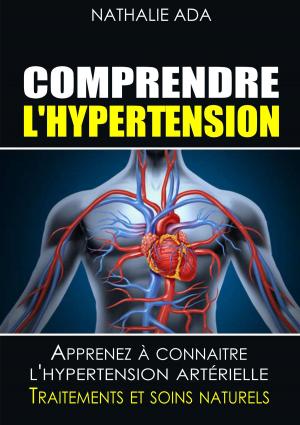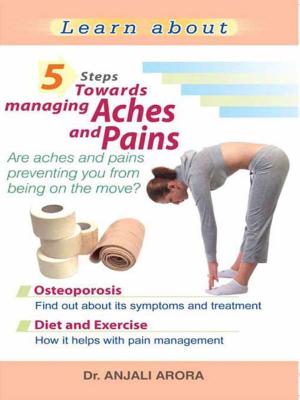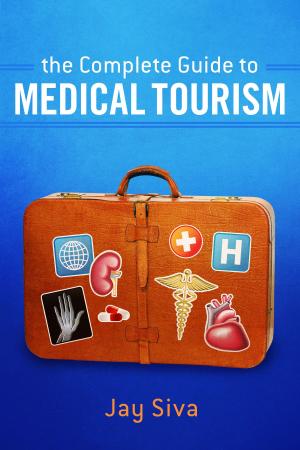The Obesity Multiple Choice Questions Learn and Prepare (Second Edition)
Nonfiction, Health & Well Being, Health, Health Care Issues| Author: | Muhammad Asad, Amjad Ali, jawaid kalim, Tawsufe Majid, Saima Ashraf | ISBN: | 9781370903535 |
| Publisher: | Muhammad Asad | Publication: | January 16, 2018 |
| Imprint: | Smashwords Edition | Language: | English |
| Author: | Muhammad Asad, Amjad Ali, jawaid kalim, Tawsufe Majid, Saima Ashraf |
| ISBN: | 9781370903535 |
| Publisher: | Muhammad Asad |
| Publication: | January 16, 2018 |
| Imprint: | Smashwords Edition |
| Language: | English |
The problem of obesity has grown to an alarming level in many parts of the world. It is a challenging health issue that requires understanding not only the pathophysiology but also the cultural and psycho-social issues that contribute to its spread. It is difficult to treat, and no quick fix is available. The evolution of obesity treatment has gone through various phases during the last few decades. A multidisciplinary approach is a current standard. Several medical and surgical options have evolved to tackle the challenges brought on by obesity. Established bariatric surgical procedures include adjustable gastric banding, Sleeve gastrectomy, Roux N Y gastric bypass and duodenal switch with biliopancreatic diversion. Recently approved devices and procedures include intragastric balloons, vagal nerve blockade (Vbloc) and AspireAssist. Several medications have also been approved to treat this disease. A lot of emphases is given to the lifestyle changes. Counseling and behavioral modification remain an integral part of any bariatric program. In the absence of lifestyle changes, the most aggressive form of bariatric surgery may not succeed, and patients may gain weight. Similarly, medications to treat obesity may not work if patients do not have the will to change. An emerging trend is the convergence of medical and surgical tracks while addressing the problem of obesity. Many bariatric surgery patients could benefit from weight loss medications at various stages of their treatments along with behavior modification to help maintain weight loss.
There is increasing interest in the medical community and general population to learn more about this health issue. A growing number of physicians are taking obesity Board Certification examinations. There are many good texts available that tackle the basic principles related to this disease, however, there remains some paucity of available literature and content to practice multiple choice questions on this subject. Experience from the different board examinations shows that majority of the issues discussed are based on clinical scenarios. Core knowledge of medicine and sound clinical experience can help examinees sail through the exam. Any well-rounded physician can answer the bulk of questions based on experience and common sense. There are generally few questions on the core knowledge of basics. As a practicing bariatric surgeon and a bariatric physician, I feel my group can write something which may benefit those who are preparing for board examinations and seeking similar pathways in their practices. This book does not replace the need for reading a formal textbook. However, it may give the reader an opportunity to reinforce and polish what has been learned from reading a standard source.
I am very thankful to co-authors Dr. Amjad Ali, Dr. Jawaid Kalim, Dr. Tawsufe Majid and Dr. saima Ashraf for their contributions. I also want to appreciate young students for their valuable time and help in writing this manuscript.
The problem of obesity has grown to an alarming level in many parts of the world. It is a challenging health issue that requires understanding not only the pathophysiology but also the cultural and psycho-social issues that contribute to its spread. It is difficult to treat, and no quick fix is available. The evolution of obesity treatment has gone through various phases during the last few decades. A multidisciplinary approach is a current standard. Several medical and surgical options have evolved to tackle the challenges brought on by obesity. Established bariatric surgical procedures include adjustable gastric banding, Sleeve gastrectomy, Roux N Y gastric bypass and duodenal switch with biliopancreatic diversion. Recently approved devices and procedures include intragastric balloons, vagal nerve blockade (Vbloc) and AspireAssist. Several medications have also been approved to treat this disease. A lot of emphases is given to the lifestyle changes. Counseling and behavioral modification remain an integral part of any bariatric program. In the absence of lifestyle changes, the most aggressive form of bariatric surgery may not succeed, and patients may gain weight. Similarly, medications to treat obesity may not work if patients do not have the will to change. An emerging trend is the convergence of medical and surgical tracks while addressing the problem of obesity. Many bariatric surgery patients could benefit from weight loss medications at various stages of their treatments along with behavior modification to help maintain weight loss.
There is increasing interest in the medical community and general population to learn more about this health issue. A growing number of physicians are taking obesity Board Certification examinations. There are many good texts available that tackle the basic principles related to this disease, however, there remains some paucity of available literature and content to practice multiple choice questions on this subject. Experience from the different board examinations shows that majority of the issues discussed are based on clinical scenarios. Core knowledge of medicine and sound clinical experience can help examinees sail through the exam. Any well-rounded physician can answer the bulk of questions based on experience and common sense. There are generally few questions on the core knowledge of basics. As a practicing bariatric surgeon and a bariatric physician, I feel my group can write something which may benefit those who are preparing for board examinations and seeking similar pathways in their practices. This book does not replace the need for reading a formal textbook. However, it may give the reader an opportunity to reinforce and polish what has been learned from reading a standard source.
I am very thankful to co-authors Dr. Amjad Ali, Dr. Jawaid Kalim, Dr. Tawsufe Majid and Dr. saima Ashraf for their contributions. I also want to appreciate young students for their valuable time and help in writing this manuscript.















